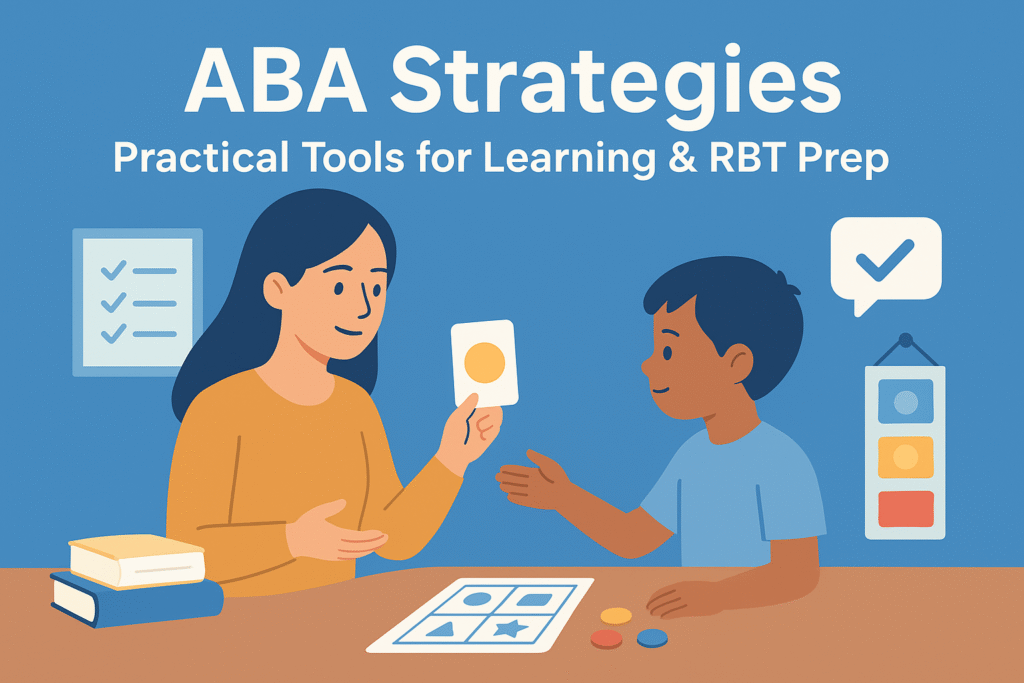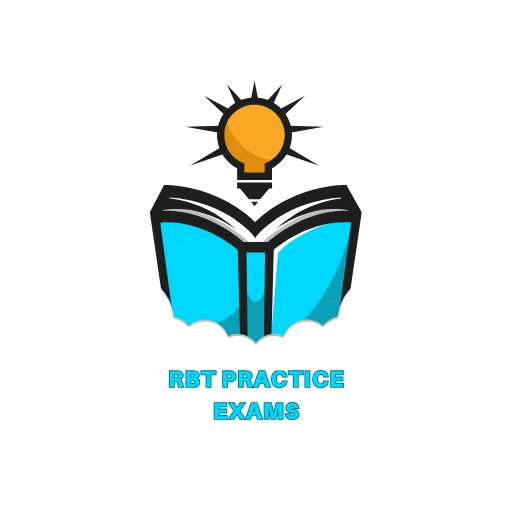Applied Behavior Analysis (ABA) is widely known for its structured and effective methods to teach skills, improve communication, and reduce challenging behaviors. At the heart of ABA are practical approaches known as ABA strategies, which give therapists, teachers, and parents step-by-step tools to help children and adults learn in meaningful ways.
Whether you are preparing for the RBT exam, supporting a child at home, or working in a classroom, understanding these strategies can make a world of difference.
Table of Contents

What Are ABA Strategies?
ABA strategies are evidence-based teaching methods grounded in behavioral science. They are designed to break down skills into manageable steps, reinforce positive behavior, and replace challenging actions with more appropriate alternatives.
According to Applied Behavior Analysis , these strategies rely on principles such as reinforcement, prompting, and systematic teaching. The goal is always the same: helping individuals gain independence and build skills that matter in daily life.
Core Principles of ABA
To understand ABA strategies, it helps to first know the guiding principles:
Reinforcement – Strengthening behavior by following it with something rewarding.
Prompting and fading – Providing support to encourage correct responses, then gradually reducing that support.
Shaping – Teaching new behaviors by rewarding closer and closer approximations.
Generalization – Ensuring skills learned in one setting carry over to real-life situations.
These principles are applied across different teaching strategies, making ABA flexible and adaptable.
Common ABA Strategies
- Positive Reinforcement
One of the most widely used ABA strategies is positive reinforcement. This means giving a reward (like praise, a token, or a favorite toy) right after a desired behavior. For example, a child who uses words to request a snack might receive the snack plus encouragement, making them more likely to repeat the behavior.
- Prompting & Fading
Prompts help learners succeed by guiding them toward the correct response. Prompts can be physical (hand-over-hand), verbal (giving a hint), or visual (showing a picture). Over time, prompts are faded so the learner responds independently.
- Shaping
Shaping involves rewarding small steps toward a goal behavior. For instance, if the goal is independent tooth brushing, you might first reward picking up the toothbrush, then applying toothpaste, and later brushing correctly.
- Discrete Trial Training (DTT)
DTT is a structured method that breaks learning into small trials. Each trial has a clear beginning and end: an instruction, the learner’s response, and feedback. DTT is often used for early skill development such as identifying objects, following directions, or imitating actions.
- Natural Environment Teaching (NET)
Unlike DTT, which is structured, NET uses natural play and daily routines to teach. For example, during snack time, a therapist may teach a child to request “juice” in the real-life context of eating and drinking.
- Functional Communication Training (FCT)
Challenging behaviors often happen because the learner is trying to communicate a need. FCT teaches more appropriate ways to express those needs, like asking for a break instead of throwing a tantrum.
- Antecedent Interventions
Antecedent strategies focus on preventing problem behaviors before they occur. This could mean adjusting the environment, giving clear instructions, or offering choices to reduce frustration.
ABA Strategies in the Classroom
Teachers often use ABA strategies to support students with autism or learning differences. For example:
Reinforcing on-task behavior with points or tokens.
Using visual schedules to help students follow routines.
Implementing prompting systems to teach reading or math skills.
These strategies not only support academic learning but also improve classroom behavior and social participation.
ABA Strategies for Parents at Home
Parents can also use ABA strategies to encourage positive behavior at home. Some simple approaches include:
Setting up a reward chart for chores or homework.
Using shaping to teach self-care skills like dressing or cleaning up.
Applying FCT to help children use words or gestures instead of crying or yelling.
The beauty of ABA is that it can be adapted to fit everyday routines, making learning opportunities natural and effective.
ABA Strategies & RBT Exam Prep
For those preparing to become a Registered Behavior Technician (RBT), mastering ABA strategies is essential. The BACB requires RBTs to demonstrate knowledge and application of these strategies in real settings.
To strengthen your preparation, practice applying terms like reinforcement, shaping, and prompting to real-world examples. You can test your knowledge with resources such as the rbt practice exam, rbt practice test , and rbt mock test . These tools can help you build confidence and apply ABA strategies with accuracy during the exam.
FAQs About ABA Strategies
What is an example of an ABA strategy? An example is positive reinforcement, where a reward is given immediately after the desired behavior to increase the likelihood it will happen again.
How do ABA strategies help autism?
ABA strategies teach communication, social, and daily living skills while reducing challenging behaviors. They provide structure and consistency that many autistic individuals find helpful.
What ABA strategies are most effective?
Positive reinforcement, prompting, and functional communication training are considered highly effective, especially when tailored to the individual’s needs.
What role do RBTs play in applying ABA strategies?
RBTs work directly with clients under supervision, using ABA strategies to teach new skills, manage behavior, and collect data on progress.
Conclusion: Putting ABA Strategies Into Practice
ABA strategies are practical, science-backed methods that make a real difference in learning and behavior support. From reinforcement and shaping to communication training and classroom interventions, these strategies offer structured ways to teach and encourage growth.
If you’re preparing for the RBT exam, understanding ABA strategies is not just helpful it’s essential. Start practicing today with the rbt practice exam to strengthen your skills and feel confident about applying these strategies in real life.
